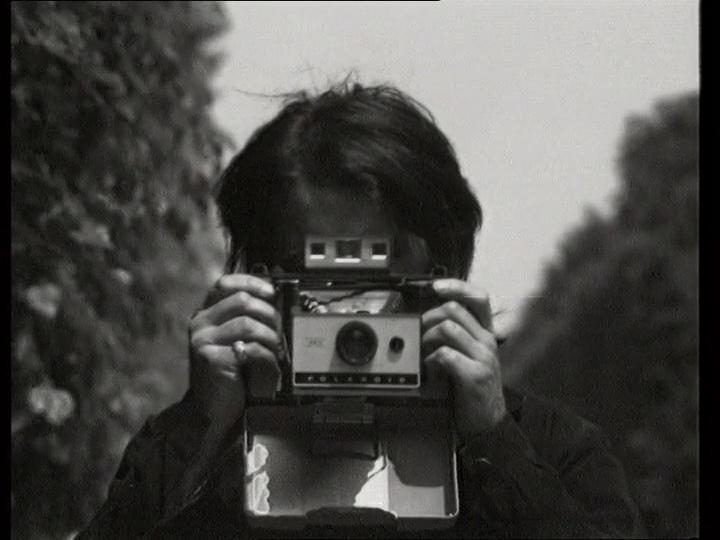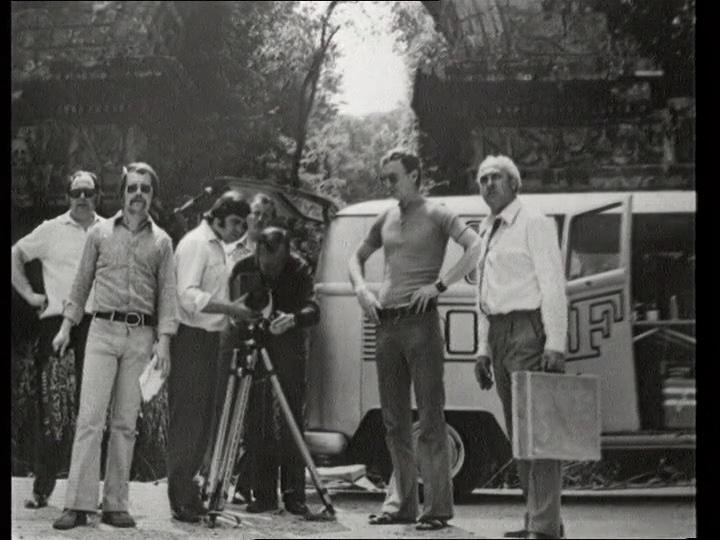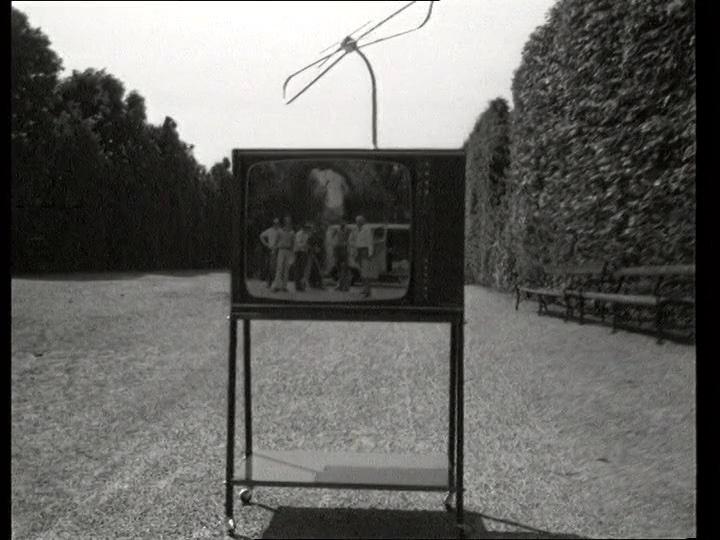Depiction is a Crime
A Lemma on the Theory of Telecommunication. Tele-Action (III);
“An instant-camera and a TV camera are placed opposite one another. They operate at the same time: The actor takes photographs with the Polaroid camera, the TV team films. When shooting the picture (click!) the TV team’s camera stops. The time taken for the development process of the Polaroid photograph, approximately 20 seconds, is recorded by the TV camera: approximately 20 seconds of black film appears on the screen. The TV camera begins filming again just at that moment at which the actor takes the Polaroid photograph out of the housing. The picture is then developed as a close up: One can see the TV team on the Polaroid photograph. A continuous live tone is added to this. A reversal, a structural layering, a loop. The product shows the process. Jacques Lacan: ‘Accordingly, human language constitutes a communication, in which the sender is returned his own message by the receiver in a reversed form’.”
“Why a crime? In literary times the observer could not only observe but also be involved in the action itself and report afterwards with words. With pictures you cannot do this, because you are confronted with the decision: either to act / to intervene or to observe / to make a picture, because you cannot at the same time intervene and make a picture. A literary poet can be involved in an action and report afterwards, a picture poet cannot report with pictures afterwards. If he wants to make a picture of a man killing another one, he has no time to prevent the killing, and if he does prevent it, then he cannot make the picture. However, with this picture he can communicate the killing to us. This kind of involvement is the same at home: detached. Time and morality: The price of a picture is sometimes a victim.”
Abbildung ist ein Verbrechen
1970
Austria
1 min 30 sec




